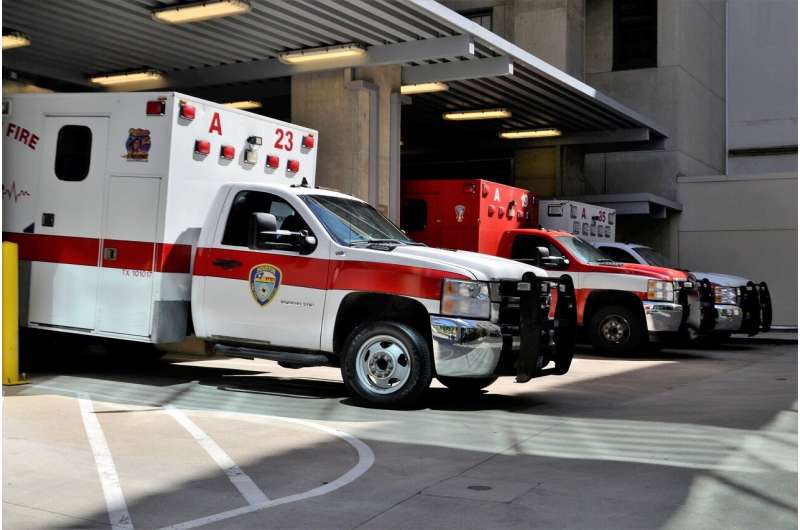
A new report from the Injury Prevention Center is the first in Alberta to provide data on injury-related emergency department visits by people experiencing houselessness—information that will help community organizations deliver injury prevention programs tailored to the distinct health-care needs of this population.
“This is the first step in understanding what the injury issues are,” says Kathy Belton, associate director of the Injury Prevention Center and adjunct professor in the School of Public Health. “What we need to do now as a center and as a province is to look at effective interventions for this population, for these injuries.”
As Belton explains, preventable injury is the leading cause of death for Albertans between the ages of one and 49, and can cost the health-care system upwards of $7 billion per year. Injuries also have trickle-down effects in the health-care system, with urgent injuries exacerbating wait times for non-urgent procedures.
People experiencing houselessness face particular challenges when they suffer injuries, because their living situation may make treatment requirements like keeping a wound clean difficult. Stigma and unconscious bias also affect how they access health care for injuries.
“Drawing attention to not only the additional risks faced by people experiencing houselessness, but also the difficulty accessing care for those injuries, is something that I feel is underreported and under-discussed in our society,” says Laurence Braun-Woodbury, Bissell Center’s director of service integration and advocacy.
“There is a significant burden of injury here that we need to start addressing,” adds Belton.
Drawing attention to a complex issue
For the report, the Injury Prevention Center compiled data from Alberta Health and consulted with Bissell Center to help write an introduction to the report and provide feedback based on their expertise.
“Houselessness is such a complex social issue, and the center really didn’t want this report to further stigmatize this population,” says Belton.
The report breaks down the data into five categories: unintentional or undetermined poisoning, violence, falls, natural or environmental injuries, and suicide or self-inflicted injuries. It also separates the stats by age and sex, and includes further specifics in categories where relevant, such as the site of injury (for example, injury to face, upper extremity or lower extremity).
The findings indicate that unintentional or undetermined poisoning is the leading cause of injury, with 25% of emergency department visits falling into this category. This can include poisoning through substances such as drugs or medications that are taken in the wrong dosages or in dangerous combinations. A preventative measure for injuries in that particular category could involve facilities like safe injection sites, explains Belton.
Other findings are specific to the challenges Edmonton’s climate presents—73% of the injuries within the natural/environmental injury category were from exposure to cold weather. The age and sex data highlight certain categories where particular groups are disproportionately affected; for example, males are more likely to fall than females, and this number is particularly high in the 55 to 59 age range.
The report also indicated that 17% of individuals ended up leaving the emergency department without receiving treatment, although the data don’t detail whether this is due to perceived stigma, difficulties accessing health care or some other reason—another area that community-based programs may want to address.
In terms of eliminating those barriers to access, Braun-Woodbury explains that Bissell Center has had success with strategies that involve meeting individuals where they’re at with their health care, including partnerships with programs like StreetWorks, working with specialized medical providers such as the Boyle McCauley Health Center and training their case management team to advocate in health-care settings.
Evidence to inform community efforts
Having concrete data is essential in creating effective programs that will address the specific needs of people experiencing houselessness, Belton notes.
“Using evidence and actually knowing what the issues are in Alberta and addressing them effectively is our best chance at reducing the cost of injury on the health-care system,” she says.
“Being able to have hard numbers to point to when talking about specific needs really allows me to go to funders and say, we need additional programming in this space at this time,” adds Braun-Woodbury.
Bissell Center’s contributions also ensured that the report had up-to-date language that reflects a sensitivity to the lived experiences of houseless individuals, explains Braun-Woodbury.
One example is the decision to use the term “houseless” rather than “homeless.” This helps to eliminate some of the stigma and negative connotations linked with the latter term. It also honors the fact that while a house is always understood as a physical space, a home can be many different things to many different people.
“The community could be your home, your friends, your family, your social support networks. Using the term homelessness could potentially sever that link between the homes that these populations have already established,” says Jakob Koziel, a research analyst in Bissell Center’s analysis and evaluation department and author of the report’s introduction.
According to Belton, the Injury Prevention Center plans to continue working with organizations such as Bissell Center to begin addressing the issue on a broader scale with the evidence in hand.
Source: Read Full Article
